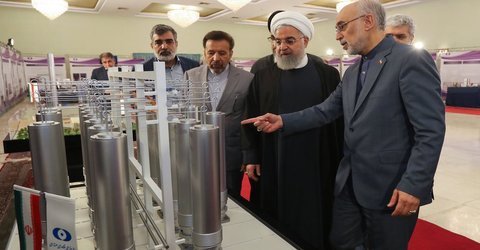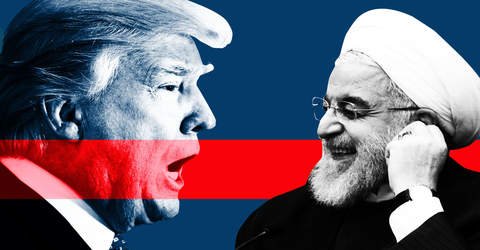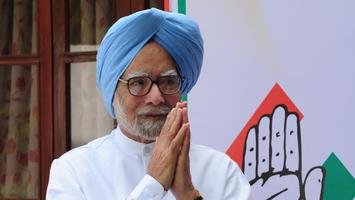Reliance Industries in India has recently invested Rs 620 crore in NetMedes, a Chennai-based online pharmacy company.
Reliance Retail Ventures has made these investments in Vitalik Health and its affiliates. The companies in this group are known as NetMeds.
With such a huge investment in Reliance Industries' online pharma company, there is a lot of competition expected to start in online pharmacy or e-pharmacy in India.
Amazon has already entered this. The pilot project of its Pharma Service has started in Bengaluru. At the same time, Flipkart is also preparing to come in this area.
Netmeds is an e-pharma portal selling prescription-based medicines and other health products. This company does home delivery of medicines.
Similarly, there are already many startups in the field of e-pharmacy. Such as 1mg, PharamaEasy, Medlife etc.
Before the arrival of these big players, the debate has started again about the e-pharmacy platform which was in controversy.
Institutions representing retailers and pharmacists have raised concerns over snatching employment of millions of people. However, e-pharma companies deny this.
Letter written to Mukesh Ambani
The All India Organization of Chemists and Druggists Association (AIOCD) has written a letter to Mukesh Ambani, Chairman and Managing Director of Reliance Industries Limited, objecting to the investment in his netmaids.
The letter reads, "It is very sad to see a company of Reliance industry investing in an illegal industry." The letter says that the e-pharmacy industry is not under the Drugs and Cosmetics Act (Drugs and Cosmetics Act) Aata, which regulates the import, manufacture, sale and distribution of medicines.
AIOCD has written one such letter to Amazon. The letter has also been sent to India's Prime Minister Narendra Modi, Union Home Minister Amit Shah, Union Commerce and Industry Minister Piyush Goyal and other ministries.
Working model threatens jobs
With big companies taking steps in the e-pharmacy industry, the concerns of retailers and pharmacists have increased. The institutions representing them have been objecting to e-pharmacy in two ways.
First, they believe that the working model of e-pharmacy platforms can lead to the jobs of millions of retailers and pharmacists. Their business may be closed.
Second, they raise questions about the legal aspect of operating e-pharma companies.
Abhay Kumar, president of the Indian Pharmacist Association, says that the working model of the e-pharma platform will gradually eliminate the jobs of pharmacists.
Says Abhay Kumar, "E-Pharma platforms will create their own stores, warehouses or inventory, where they will store medicines directly from companies or distributors and then supply medicines from there itself." In such a situation, the role of the local chemist shop will end. ''
There is already a crisis on pharmacists' jobs. The vacant posts of pharmacists in hospitals are not filled. After three years of study, the youth find themselves unemployed. So, as a chemist, do they want to take away the means of earning? "
Giving high discounts to e-pharma companies is also a cause for concern for retailers. AIOCD President J.S. Shinde says that a small retailer will not be able to compete with them in the way e-pharma companies offer more discounts.
Js Shinde said, "Retailer gets 20 percent and wholesaler 10 percent margin. However, new players coming to e-pharmacy are offering 30 to 35 percent discount. They can give deep discounts, can also cause some losses, but, the general retailer does not have that much capital. This will be a problem for the customers as they will be monopolized when retailers move out of the market and it will be difficult to control prices.
He says that there are around eight and a half lakh retailers in the whole country and one and a half lakh stockists and substockists, whose livelihood is about to be snatched away. Together, the working people and their families will become destitute of about 19 million people. It will be a double whammy for people suffering from recession due to Corona virus.
What do e-Pharma companies say
However, e-pharma companies completely deny all these allegations. He says that there are misconceptions among people about his working model. Their way of working will increase convenience for customers rather than take jobs, make it easier to access medicines and increase demand for pharmacists.
There are two types of business modus operandi in online selling of medicines. One marketplace and the other inventory led hybrid (online / offline) model.
In the marketplace model, e-pharmacy platforms take online prescriptions from the customer. These prescriptions can be uploaded directly to the website or app, through WhatsApp, email or fax. The prescription is then delivered to a local licensed pharmacist (chemist), from where the medicine is taken and delivered to the customer.
At the same time, in the inventory model, the company that runs the e-pharmacy platform keeps the stock of medicines itself and delivers the medicines on a prescription basis. That online platform itself acts as a chemist.
Some companies are working on a hybrid model. She also maintains a warehouse or store of medicines and also delivers medicines through contact with local chemists. They have a license to build a warehouse or store of medicines.
Now retailers and pharmacists have concerns about the inventory or hybrid model as the role of chemist shops will end in this.
But, Digital Health Platform, an association of leading e-pharmacy companies, says that e-pharma platforms will operate solely on the marketplace model.
"There are many misconceptions about the e-pharmacy model," said Dr Varun Gupta, Convenor of Digital Health Platform. The e-pharmacy marketplace model will help the existing pharmacy deliver online services. This will create a network by connecting different pharmacies on one platform. With this, inventory management will be better, access will increase, prices will be reduced and customers will get better services. ''
Doctor Varun says that the Covid-19 epidemic has shown how the two mediums can work together in the sale of drugs. People have insecurity and anxiety about any beginning. Similar opposition has also been seen earlier when new technology comes.
An expert associated with the online pharmacy industry also says that they do not give too much discount. If someone continuously gives such a discount, then they will not be able to survive in the market. E-pharmacy platforms fix their margins with local pharmacists.
Abhay Kumar says that if companies adopt a marketplace model and create opportunities for pharmacists, then they have no objection but this is very unlikely. Even now some platforms are working on hybrid models. They have more benefit in this. Therefore we oppose it.
E-pharmacy platform and existing law
E-Pharma companies have been working in the Indian market for many years but are still at a very small level. The use of the e-Pharma platform has also increased in lockdown due to Corona virus. They are mostly used for chronic medicines, ie medicines of long-standing diseases.
In terms of statistics, according to a report by the Economics Times, the market for drugs for e-pharmacies in India can reach $ 18.1 billion by 2023. It was $ 9.3 billion in 2019.
But, the validity of the e-pharmacy platform has been questioned for a long time. Even this matter has reached the court.
Js Shinde says, "E-pharmacies are not currently covered under the Drugs and Cosmetics Act, so it is illegal to run them. The act does not mention online sale of drugs. So it is difficult to monitor and control them."
At the same time, e-pharma companies have been claiming that they are working in the legal realm. Dr. Varun Gupta explains that the e-pharma business model falls under the Information Technology Act, 2000, the concept of middleman, and licensed pharmacists (who deliver prescription drugs) are covered under the Drugs and Cosmetic Act. E-Pharma companies are operating under this model.
E-pharmacy draft
After the objections of many parties, on 28 August 2018, a draft of the rules was prepared to regulate the online sale of drugs, i.e. to bring them under the law. Based on this, the Drugs and Cosmetic Rules, 1945 were to be amended. Opinion was sought from general public / stakeholders on this draft.
This draft includes registration of e-pharmacy companies, inspection of e-pharmacy, process for distribution or sale of drugs through e-pharmacy, prohibition of advertisement of drugs through e-pharmacy, grievance redressal mechanism, e-pharmacy There were provisions related to monitoring, etc. But, nothing further has been done on this.
When the matter reached Delhi High Court in December 2018, the court ordered a ban on the online sale of drugs without a license. After this, the single bench of Madras directed not to do online business of medicines till the draft rules were notified. However, in January 2019, the Division Bench of Madras stayed this instruction.
It is discussed that the government is considering amending the Drugs and Cosmetics Act so that online sales of medicines can also be brought under its purview.
However, the Pharmacists and Retailers Association is considering all aspects of this and is demanding to make a law related to it.
Js Shinde says that in countries where the e-pharmacy industry is running, what are its effects and what should be done in India to avoid them. It should not be allowed without considering all the sides.
They told that we will give 21 days notice to the government that they will listen to our concerns and take any step. If there is no response from the government, then all the drug dealers will go on strike.













